|
Author
|
Topic: Apollo command module (107) circuit breaker
|
SpaceAholic
Member Posts: 4437
From: Sierra Vista, Arizona
Registered: Nov 1999
|
 posted 02-03-2012 08:01 PM
posted 02-03-2012 08:01 PM
   
This single pole AC breaker was a recent capture on eBay. Background story offered by the seller is that her late husband was a reporter in the San Fernando Valley California area and a close friend with the vice president of the company (Mechanical Products); and was gifted with the switch. The plant was located a relatively short distance (32 miles) from the North American Rockwell facility in Downey where the Apollo Command Module was produced. The letter is dated Aug. 20, 1969, which represents a plausible timeline for the switch to have originated from Columbia post flight. Consider the Apollo 11 Command Module, S/C 107 was initially sent to JSC Houston where she remained with the crew in quarantine through 12 August. Columbia arrived at NAR Downey Aug. 14 to a team eager to commence work on inspection and resolve mission anomalies. De-installation of the breaker panel and transport to the vendor (Mechanical Products) would have occurred very quickly.
Last image of a separate breaker panel to provide some context. 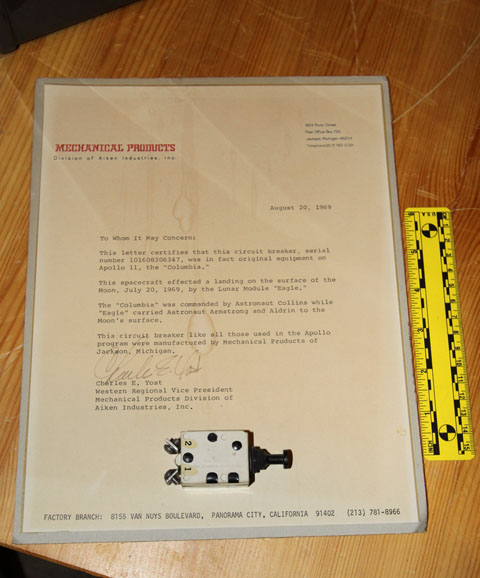 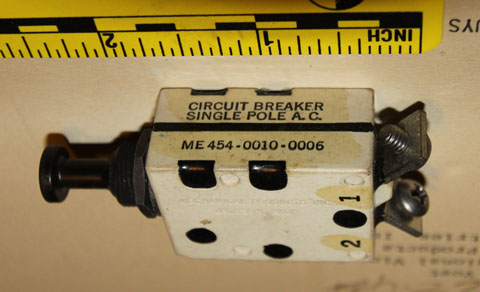
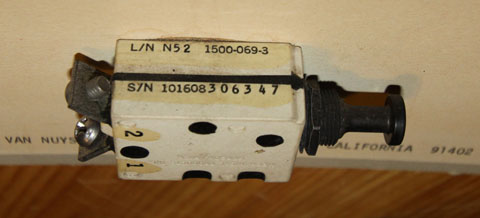
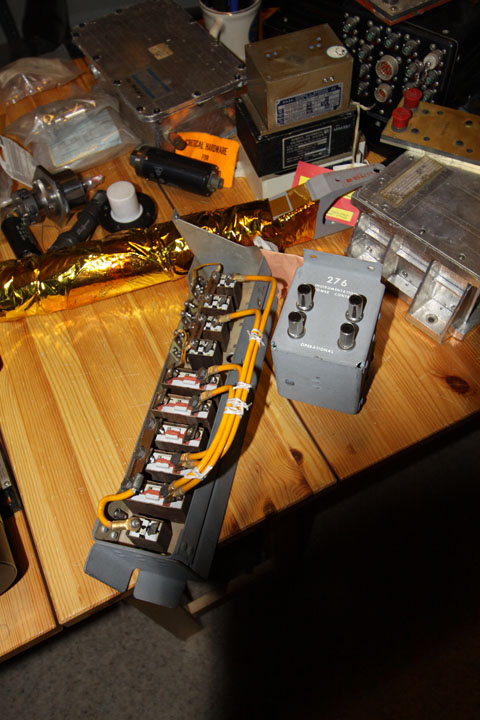
|
SpaceAholic
Member Posts: 4437
From: Sierra Vista, Arizona
Registered: Nov 1999
|
 posted 02-03-2012 08:02 PM
posted 02-03-2012 08:02 PM
   
I've highlighted abrasion marks on the terminal lugs which are consistent with prior installation of this breaker.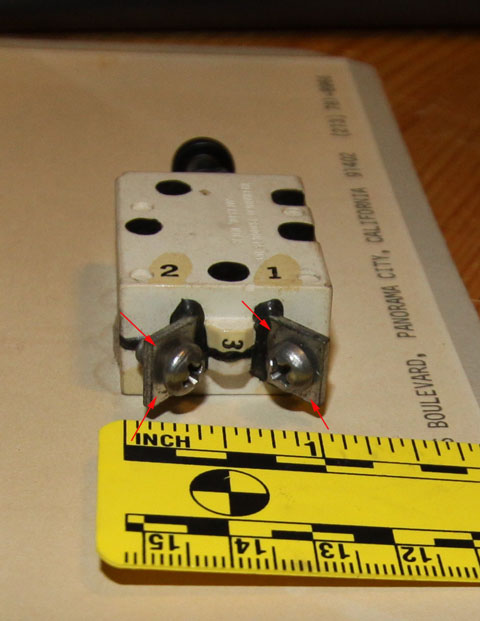 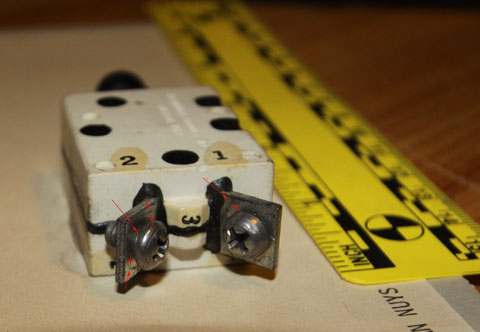
|
space1
Member Posts: 853
From: Danville, Ohio
Registered: Dec 2002
|
 posted 02-03-2012 09:40 PM
posted 02-03-2012 09:40 PM
   
Fantastic! Congratulations. |
spaced out
Member Posts: 3110
From: Paris, France
Registered: Aug 2003
|
 posted 02-04-2012 02:54 AM
posted 02-04-2012 02:54 AM
   
I thought that might have been you winning that one.If I'd won myself you would have been the first person I'd have gone to for your opinion, so at least it's ended up in expert hands.  |
David Carey
Member Posts: 782
From:
Registered: Mar 2009
|
 posted 02-04-2012 12:25 PM
posted 02-04-2012 12:25 PM
   
Excellent find Scott. I'm surprised at the differing approaches to electrical connectivity employed throughout the spacecraft. From your whole-panel image and this example, you can clearly see that a screw and lug attach is used on the CM circuit breaker. By contrast, all the control panel paddle switches that I've seen use soldered wire terminals at the switch side (though not sure what happened at the other end where they interfaced to controllers and sequencers). Each approach would have quite different reliability issues; screw-lugs and vibration seem the more failure-prone combo but bad solder joints happen too so hard to say. Perhaps something they just had to live with given differences in connection-density and current-load between switches/breakers. I don't know if it pertains to all flight-configuration CBs but as another potential signature of flown status do you see any residual traces of Ladicote per John's CM CB box panel example? |
space1
Member Posts: 853
From: Danville, Ohio
Registered: Dec 2002
|
 posted 02-04-2012 04:14 PM
posted 02-04-2012 04:14 PM
   
I wondered about the RTV/Ladicote as well. But when you look at Scott's panel, there is clearly none used there. Perhaps it depended on whether the panel was enclosed or not. |
SpaceAholic
Member Posts: 4437
From: Sierra Vista, Arizona
Registered: Nov 1999
|
 posted 02-04-2012 04:36 PM
posted 02-04-2012 04:36 PM
   
Think it was more a function of proximity/density of the wiring combined with the possibility of movement to contact which increases risk of arcing/sparking. It was not applied to all electrical connectors (the connectors on the right side of the inverter control box in second image below do not include Ladicote). If you look carefully at the complete Pyro panel, the breaker sits inside a sleeve, so only the outboard (lugs) would have been exposed to ladicote (if applied). 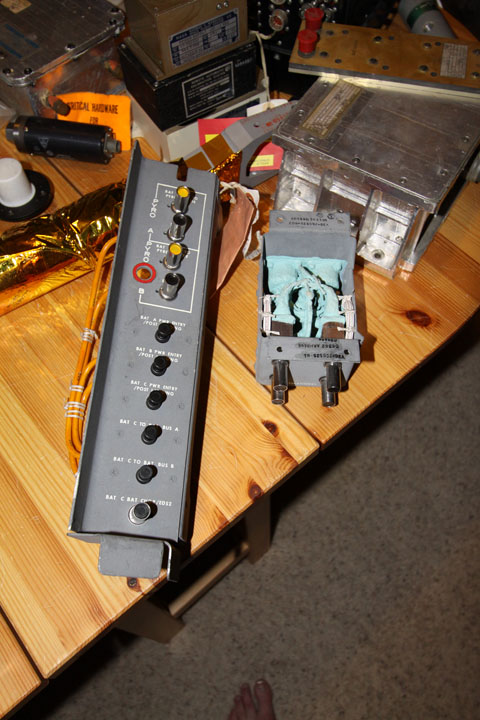 One other possibility for not putting it on the above panel - requirement to access in an emergency (the panel was associated with the Pyro batteries)... that panel also has a port for application of extinguishing agent as an alternative to ladicote. Other examples of ladicote application: 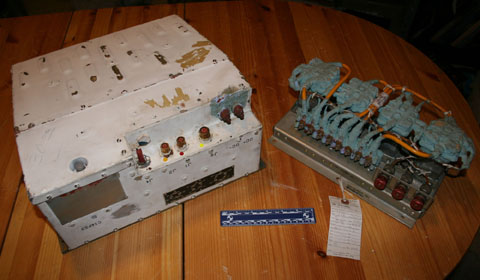 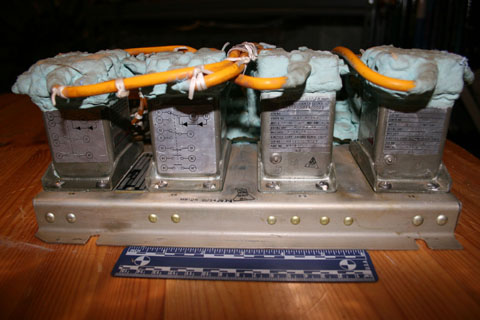
|





















